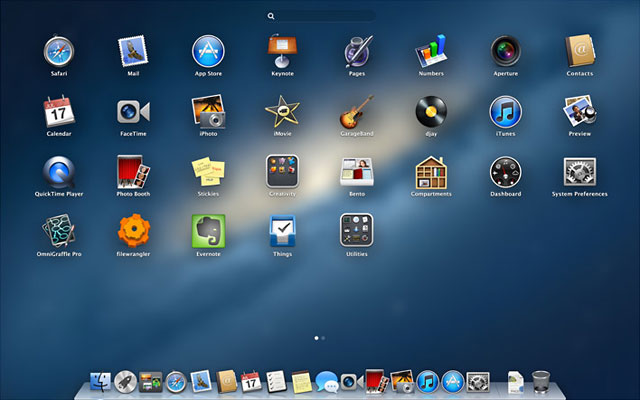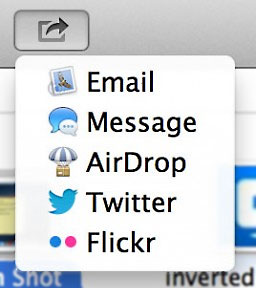A few years back, Apple dropped the word Computer from its
corporate name, a reflection of the growth of mobile devices. In the
company's 2012 third fiscal quarter, Apple sold 43 million iPhones and
iPads versus 4 million Macs.

Mac sales have been climbing steadily, but newer products have eclipsed
those numbers.
Mac sales, however, are continuing to grow at a time when sales of
PCs overall are flat. Now Apple has fast-tracked development of the OS
X operating system for its Macintosh computers, releasing the latest
version, OS X 10.8
Mountain Lion, on July 25, just a year after the previous version,
OS X 10.7 Lion.
Lion added features to make desktop and notebook Macs look and feel
more like iOS-powered iPads and dropped compatibility with older Mac
applications written for PowerPC processors. Quite a few Mac-users
resisted its charms, choosing to stick with 2009's OS X 10.6 Snow Leopard.

OS X 10.8 Mountain Lion continues the iOSification of Mac OS X.
Mountain Lion continues the iOSification trend. Some of it is simple
renaming: what used to be Address Book, iCal, and iChat are now
Contacts, Calendar, and Messaging - just like on the iPad and iPhone.
New on the Mac are Reminders and Notes copied from iOS. iPad-like
AirPlay
Mirroring lets users wirelessly display presentations, videos, and
more on an HDTV screen (making use of the $99 Apple TV), but this
only works on 2011 and 2012 Macs.
Save a note on your Mac, and it appears on your iPad via the iCloud
service, one of the ways Mountain Lion ties Macs and iOS devices
together. Contacts, calendar entries, and Safari bookmarks are
similarly synced. Apple applications now offer to save documents to
iCloud's Document Library.
 Also new to the Mac but familiar to iOS device owners: a
Sharing
button in application toolbars. Click on this icon to share current
content - to an email message, a social media site, or other options.
Apple has integrated Twitter support throughout Mountain Lion, and
Facebook support is promised. Both the Sharing button and iCloud saving
should appear in third-party apps soon.
Also new to the Mac but familiar to iOS device owners: a
Sharing
button in application toolbars. Click on this icon to share current
content - to an email message, a social media site, or other options.
Apple has integrated Twitter support throughout Mountain Lion, and
Facebook support is promised. Both the Sharing button and iCloud saving
should appear in third-party apps soon.
Among what Apple claims as 200 new features is systemwide dictation,
giving users the option to speak instead of typing into any
application. Important caveat - this only works when the computer has
an online connection.
 Security feature Gatekeeper limits
software installations to those applications sold by Apple and its
registered developers.
Security feature Gatekeeper limits
software installations to those applications sold by Apple and its
registered developers.
Like Lion, Mountain Lion does not support Mac applications developed
for older PowerPC processors. If you rely on these, you should either
avoid Mountain Lion or look for replacements for those
applications.
I had some applications that ran fine under Lion - including
Parallels
virtualization software and the utility to connect to Dropbox's
online storage - that failed after I installed Mountain Lion.
Downloading newer versions corrected these incompatibilities. (RoaringApps.com is collecting
compatibility reports and may be worth a visit before you migrate to
Mountain Lion.)
You won't find boxed versions of Mountain Lion for sale at retail
outlets; it's only available as a 4 GB $20 download from Apple's Mac App Store or preinstalled on a
new Mac. A purchase for personal use can be installed on as many Macs
as you own. Upgrading is smooth and takes an hour or two.
Mountain Lion is a relatively modest evolution of Lion. In my tests,
it seems faster and more stable. For those reasons - and the low price
- I recommend it for any Mac owner running Lion. If you're still
running OS X 10.6 Snow Leopard, you can upgrade directly to Mountain
Lion. But if you chose to avoid Lion, you may choose to avoid Mountain
Lion as well. 
First published in Business in Vancouver's High Tech Office column
on August 9, 2012.



 Also new to the Mac but familiar to iOS device owners: a
Also new to the Mac but familiar to iOS device owners: a
 Security feature Gatekeeper limits
software installations to those applications sold by Apple and its
registered developers.
Security feature Gatekeeper limits
software installations to those applications sold by Apple and its
registered developers.
